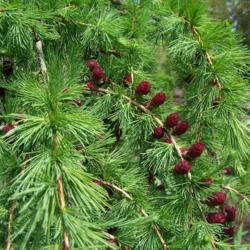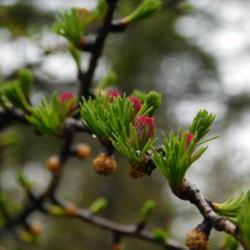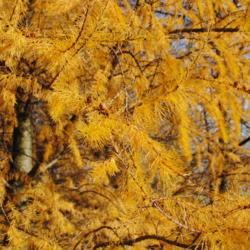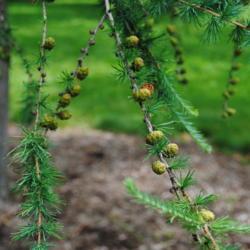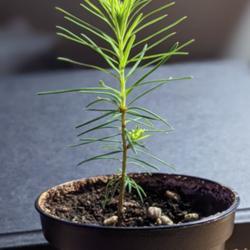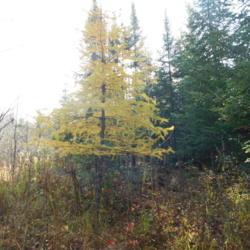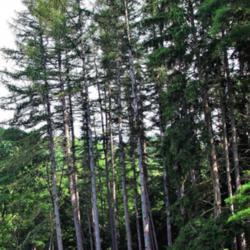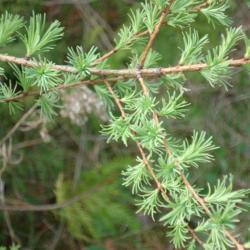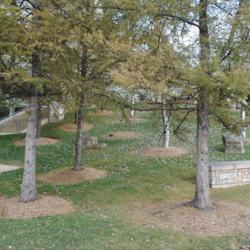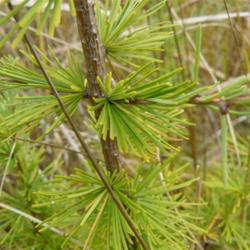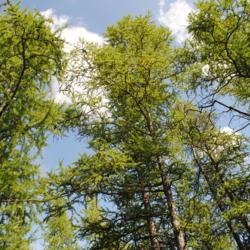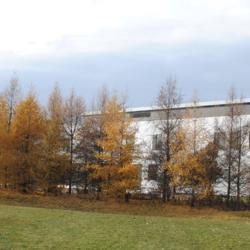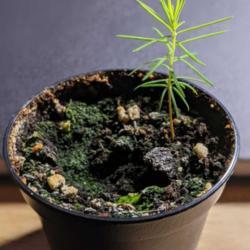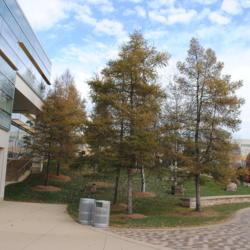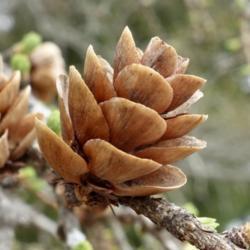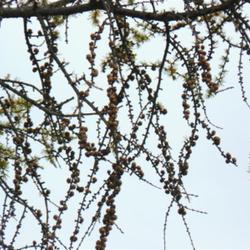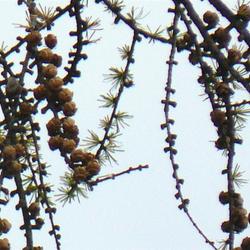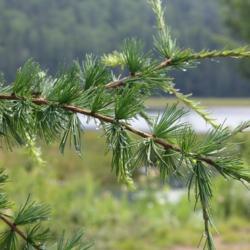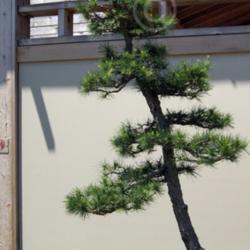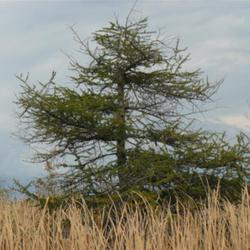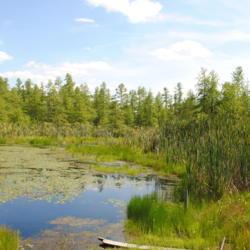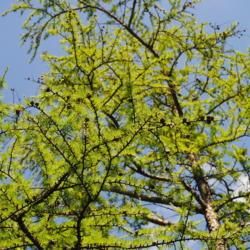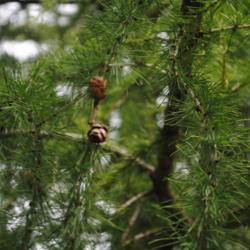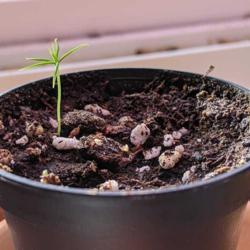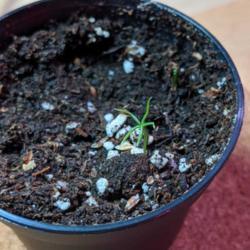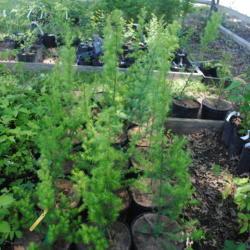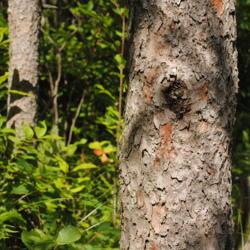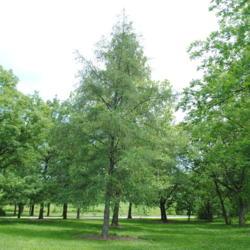Posted by
ILPARW (southeast Pennsylvania - Zone 6b) on Nov 22, 2017 8:21 PM concerning plant:
The Eastern or American Larch or Tamarack has a large native range from Newfoundland to northern Pennsylvania to some spots in northern Ohio & Indiana, and northeast Illinois through most of Wisconsin and much of Minnesota up into the Yukon and central Alaska. It grows mostly in bottomlands, bogs, swamps, and along watercourses, but it can also grow uphill in dry soil from a shallow bedrock. I've seen some American Larch growing on uphill sites near highways in both central Wisconsin and northern Pennsylvania. This Larch, like the other species, grows about 1.5 to 2 feet/year and it lives about 150 to 180 years. Its flat to slightly 3-angled, slightly curved needles are 3/4 to 1 1/4 inches long and are arranged in whorls on spurs of usually 10 to 20 needles. The cones are tiny, about 1/2 to 0.8 inches long with 8 to 14 scales. It is deciduous and the needles turn a lovely golden color before falling in autumn. It can be grown in a regular landscape and do well, including silty-clay loam soil that has a surface pH of about 6.8 to 7.1 as typical around Chicago, Illinois. (It is the European Larch that is occasionally planted in Midwestern and Mid-Atlantic landscapes of parks, estates, or well-to-do neighborhoods, and sometimes the Japanese.) The American Larch is offered by some native plant and specialty nurseries and should be used much more. In late November of 2019 I was delighted to find that College of Du Page in Glen Ellyn, Illinois, west of Chicago, had planted a large number of this American species in two areas of the huge landscape of the campus. Some were planted uphill in a more conventional landscape with some Quaking Aspens nearby, and a large mass of this larch was planted in wetter soil near the prairie restoration of Kirk Prairie.
